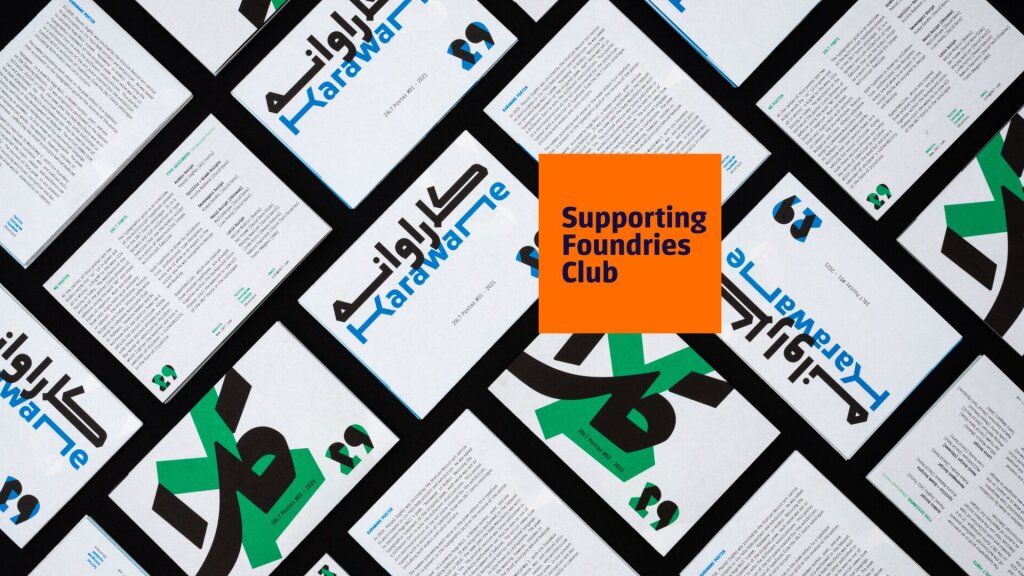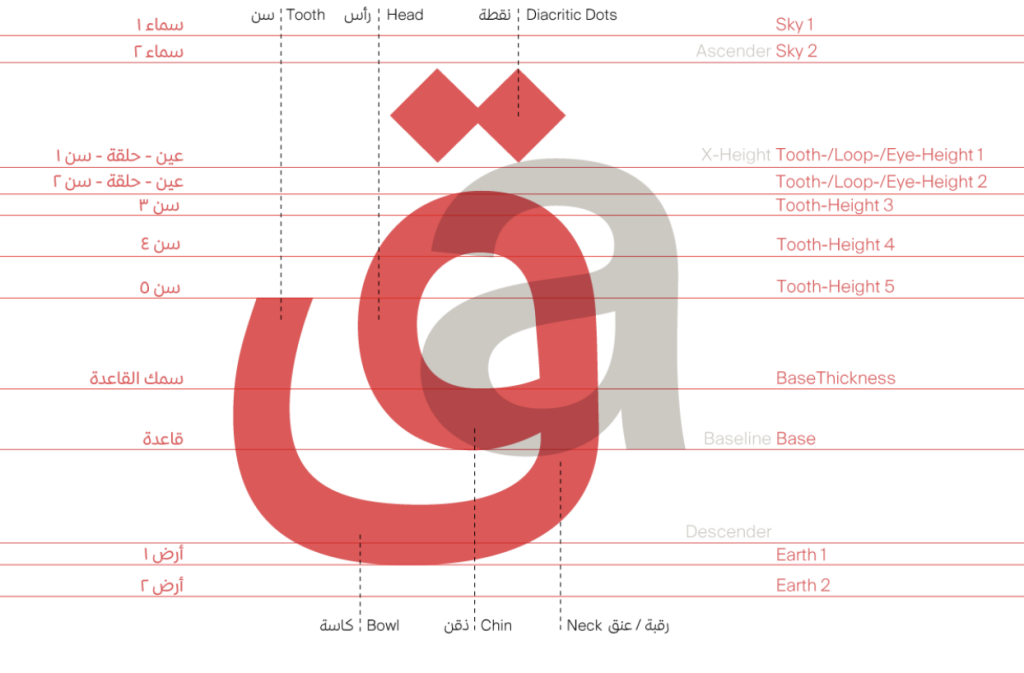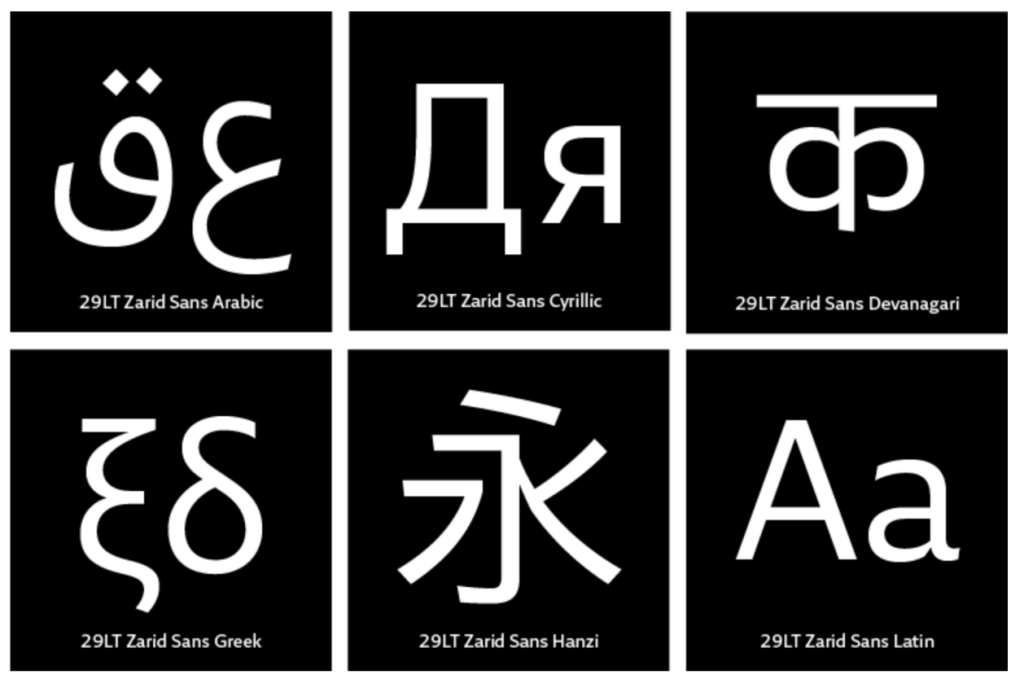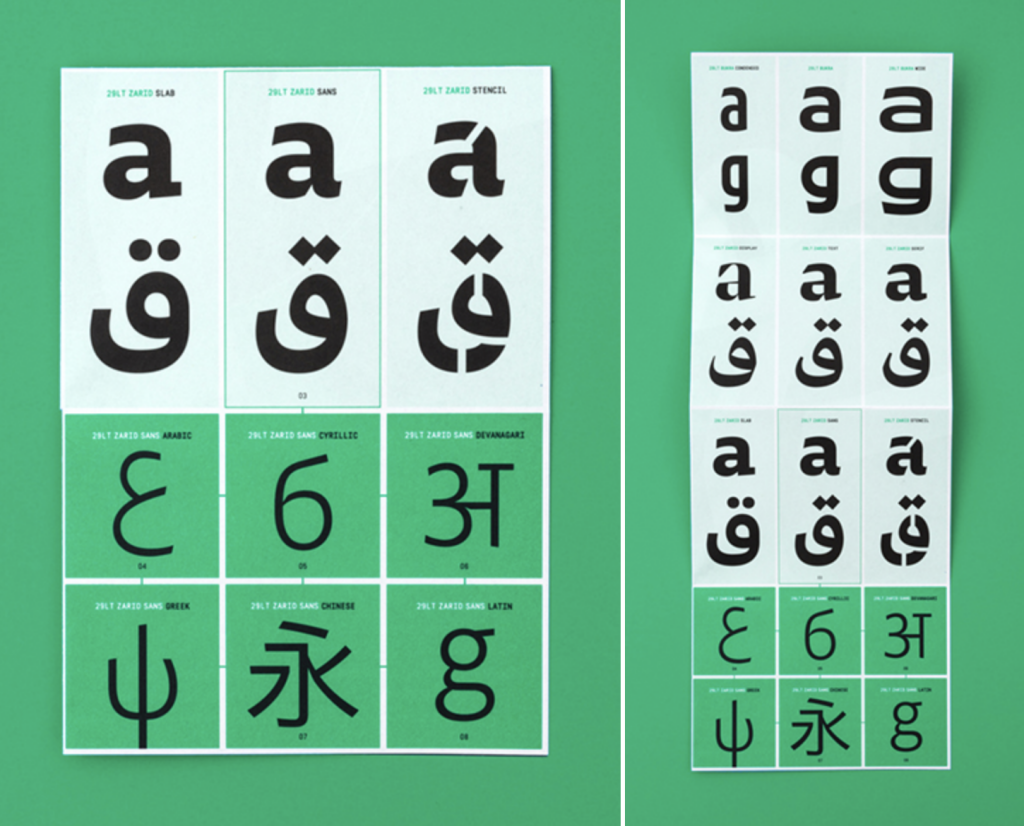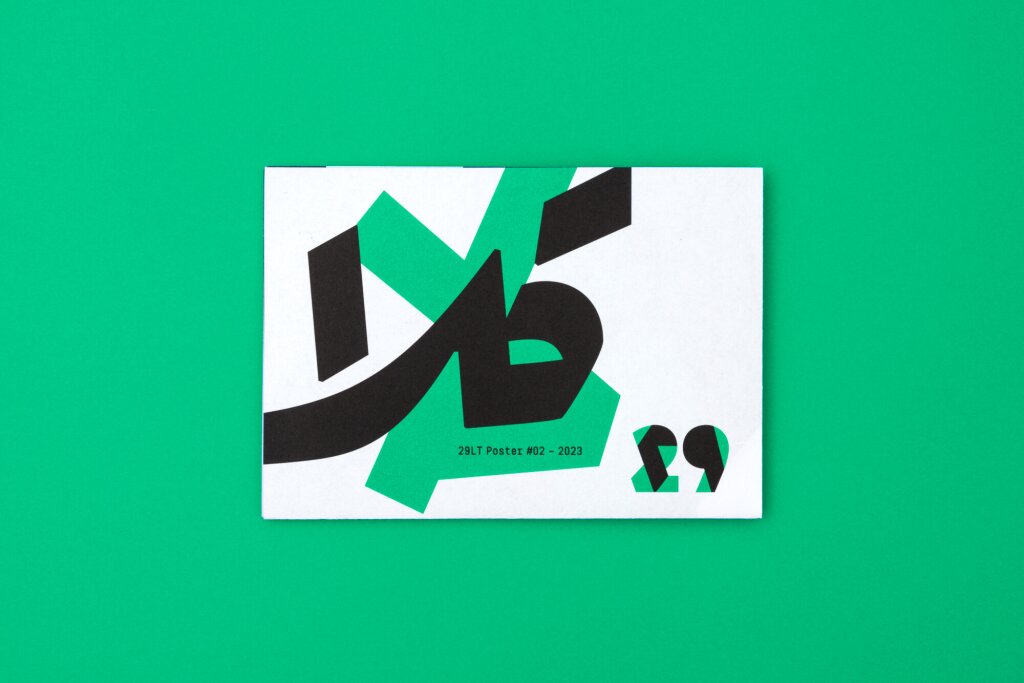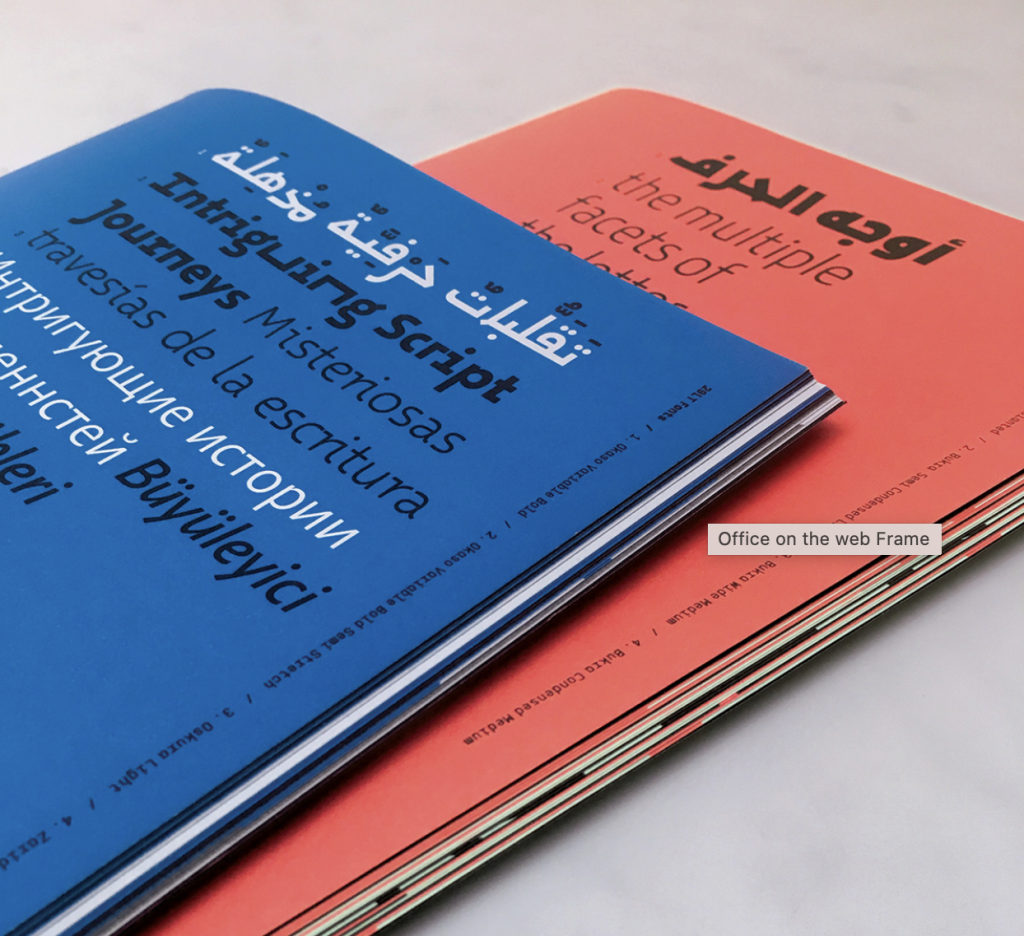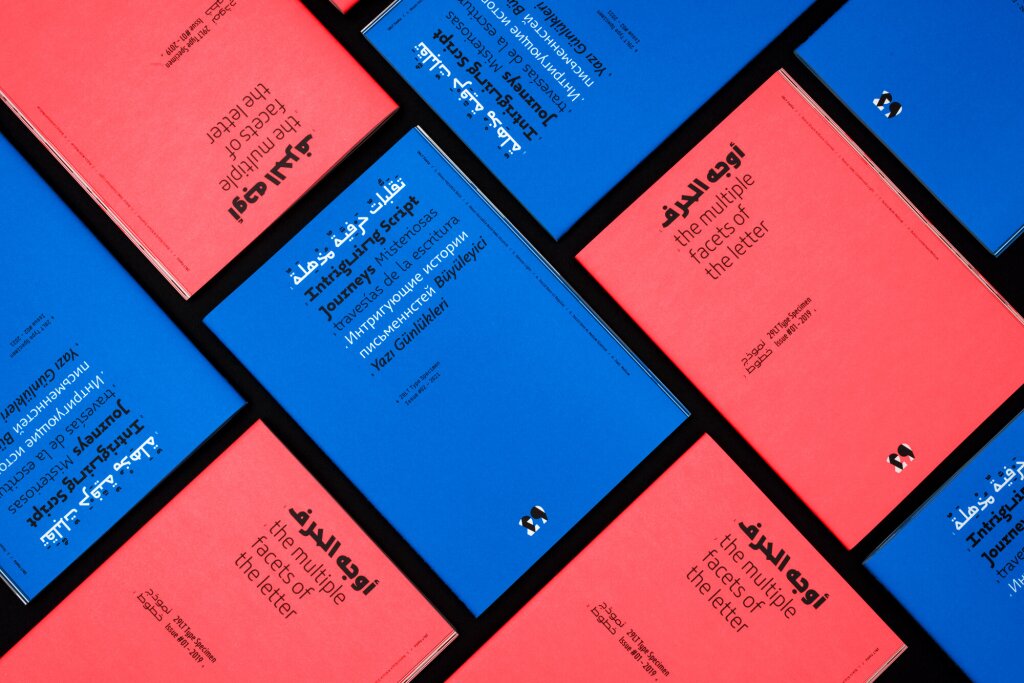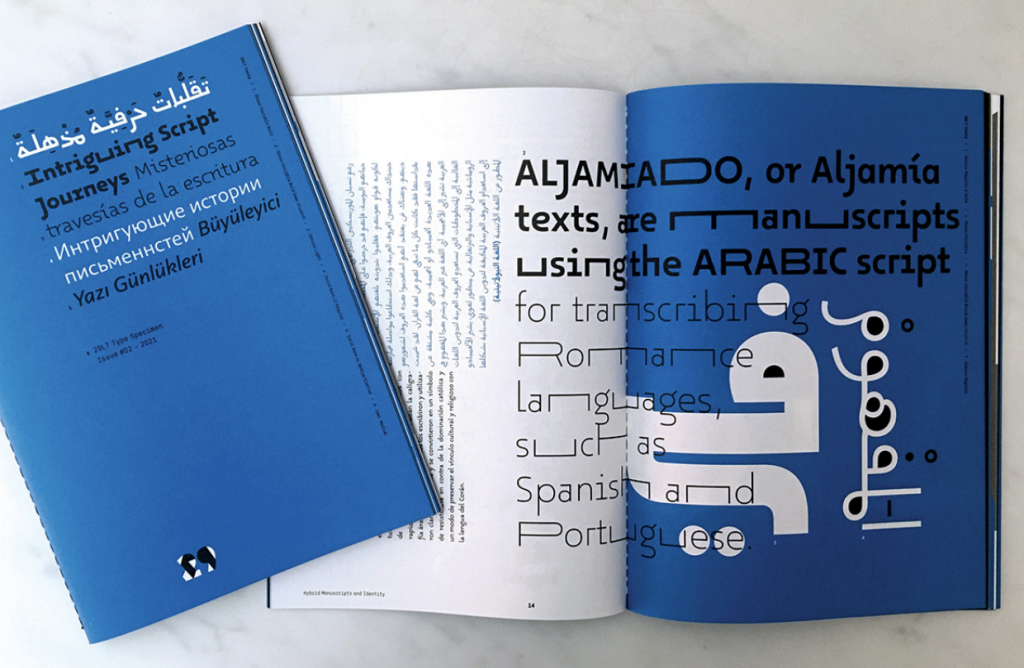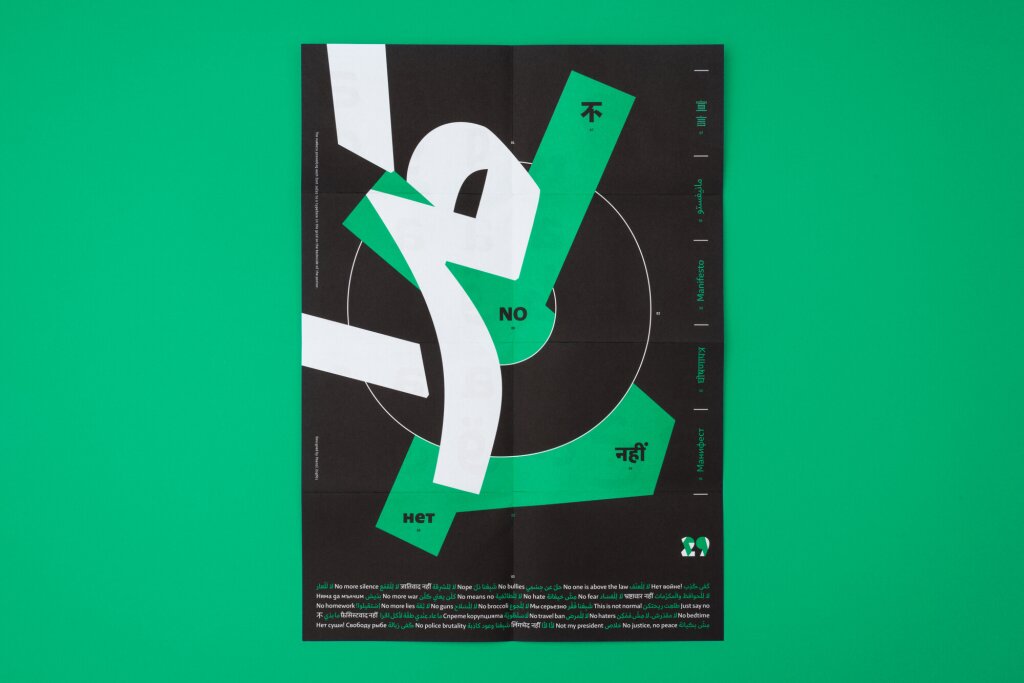Content provided by Supporting Club member 29LT.
Multiscript as Multivocal: The Typography of Content
Each 29LT publication is a typographic narrative. These print editions are designed to reflect and showcase the foundry’s fonts - not through traditional type specimens, but through content-led layouts that embody the character and functionality of each typeface.
These publications are multilingual by design. Rather than mirror translations, each chapter uses two to three languages to explore different aspects of the same theme. This editorial structure underscores a core principle: a typeface isn’t just a shape - it’s a vessel for meaning, shifting between scripts and identities.
Typography here becomes a visual dialogue, where Arabic, Latin, Cyrillic, Greek, and soon Devanagari, Japanese, and Korean coexist and interact. Each chapter’s layout is inspired by the subject matter, anchored in visual research, and styled with fonts that echo its emotional tone. The result: a publication that is at once academic, experimental, and delightfully tactile.
The Language of Design Is Cultural
One standout issue published in 2021 centered on the Aljamiado manuscripts, historical texts that used the Arabic script to write Romance languages like Spanish. This sparked a broader investigation into how languages navigate between scripts over time, shaped by politics, colonization, and cultural shifts. The issue dove into Turkish, post-Soviet, and Vietnamese language transitions - each brought to life through a unique, multilingual visual structure.
This kind of editorial research does more than showcase fonts - it challenges readers to think critically about script as identity, and about the cultural journey every language takes.
29LT fonts, such as Okaso and Oskura, weren’t just applied here - they were developed in parallel with the research, shaped by the same questions of identity and legibility across time and space.
Designed by Natives, for Natives and Beyond
A key principle behind 29LT’s design philosophy is the native-speaker model: every script is developed by someone who understands its linguistic, cultural, and visual context. Take 29LT Zarid Sans: the Arabic script was designed by Zoghbi in Lebanon; the Latin by Jan Fromm in Germany; the Cyrillic and Greek extensions by Krista Radoeva, a Bulgarian designer with deep familiarity with both scripts; and most recently, the Hanzi and Hebrew scripts have been added, expanding the type family to a fully six-script multiscript system.
References
Zoghbi, P. (2015, July 30). Arabic Type Anatomy & Typographic Terms. 29LT Blog. https://blog.29lt.com/2015/07/30/arabic-type-anatomy-typographic-terms
29LT. (2020, July 13). Multi-Script 29LT Fonts. 29LT Blog. https://blog.29lt.com/2020/07/13/multi-script-29lt-fonts
29LT. (2021, July 20). 29LT Publications & Topics. 29LT Blog. https://blog.29lt.com/2021/07/20/29lt-publications-topics
29LT Blog Main Page: https://blog.29lt.com
Additional imagery and updated visuals can be found at: https://www.29lt.com/products/ and https://blog.29lt.com/2023/07/03/29lt-zarid-sans-hanzi-a-chinese-script-match-to-arabic/
The content of this article is provided by the Supporting Foundry Club member 29L. GRANSHAN is not responsible for its accuracy or for any opinions expressed.
